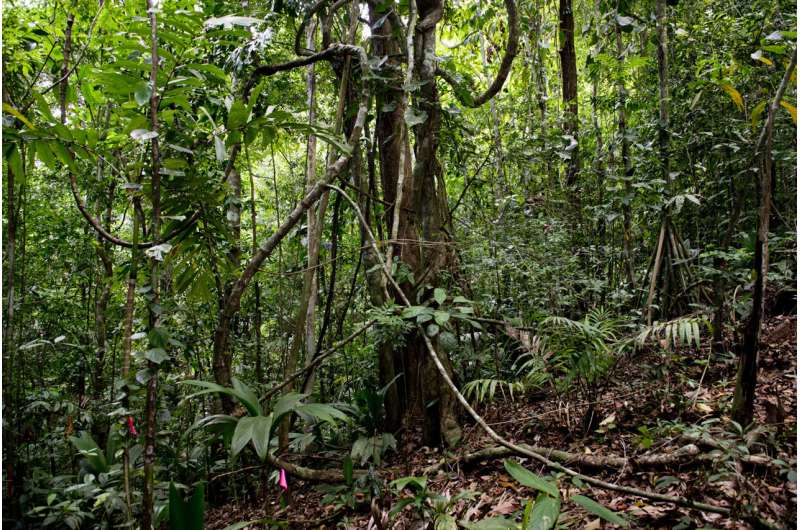Dramatic liana increases in old-growth tropical forests associated with natural disturbance and climate change

Lianas are the bridges of the tropical forest. These long, woody vines contribute to the high diversity of tropical plants and, by linking forest trees together, they also help animals move about the canopy. However, their abundance is increasing dramatically, which may be linked to natural forest disturbance. To test this hypothesis, a team led by Stefan Schnitzer, a Research Associate at the Smithsonian Tropical Research Institute (STRI), followed the fate of more than 117,000 rooted liana stems over a 10-year period in a 50-ha area of old-growth forest in Panama's Barro Colorado Island (BCI).
The study area chosen by the team has not been manipulated by humans for centuries, yet according to study results recently published in Ecology Letters, liana density increased by almost one-third between 2007 and 2017. Most of these increases were associated with natural canopy disturbance (canopy gaps).
In addition to canopy gaps, the team hypothesized that environmental factors related to climate change, such as elevated temperatures, carbon dioxide levels and droughts could also be favoring the proliferation of lianas over trees in the forest. However, their results indicated that these factors alone influenced liana proliferation to a far lesser extent than disturbance.
"Lianas are clearly responding to disturbance with increased proliferation, which has resulted in massive liana increases on BCI over the past decade," said Schnitzer. "However, their response to disturbance appears to be intensified or potentiated by other factors, such as increased carbon dioxide, temperature, or other climate-change factors."
Despite their positive ecological effects on animals, lianas may be altering the functioning of tropical forests by inhibiting tree growth, reproduction and survival. In canopy gaps that favor liana growth and new stem production, these circumstances may lead to a vicious cycle that further inhibits canopy tree regeneration and favors sustained liana proliferation.
Given the importance of tropical forests for carbon storage, the cumulative negative effects of lianas on tree growth and survival may suppress the ability of tropical forests to mitigate climate change.
"Lianas may continue to accumulate in abundance in tropical forests until a new stable equilibrium is reached where liana recruitment is once again balanced by liana mortality," Schnitzer said. "Alternatively, lianas could continue to increase in abundance on BCI and in other forests, eventually changing much of the high-canopy forest to low-canopy liana-dominated forest. Only continuous monitoring of forest plots over time will allow us to determine the trajectory of increasing lianas in tropical forests."
The Smithsonian Tropical Research Institute, headquartered in Panama City, Panama, is part of the Smithsonian Institution. The Institute furthers the understanding of tropical nature and its importance to human welfare, trains students to conduct research in the tropics and promotes conservation by increasing public awareness of the beauty and importance of tropical ecosystems.
More information: Stefan A. Schnitzer et al, Local canopy disturbance as an explanation for long‐term increases in liana abundance, Ecology Letters (2021). DOI: 10.1111/ele.13881
Journal information: Ecology Letters
Provided by Smithsonian Tropical Research Institute



















